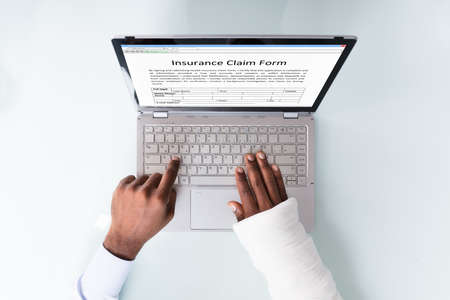Understanding What’s Covered (and What’s Not)
Before you even think about filing a claim with your commercial auto insurance provider, it’s crucial to know exactly what your policy covers—and where it draws the line. Most American business owners assume that “commercial auto” covers any accident or loss involving their company vehicles, but the reality is more nuanced. Typical coverages include liability for bodily injury and property damage, collision (damage to your vehicle regardless of fault), and comprehensive (theft, vandalism, weather events). For example, if your delivery van is rear-ended while making a stop in downtown Chicago, your liability and collision coverage would likely apply. But let’s say an employee uses the company truck for personal errands and gets into an accident—that might not be covered because most policies exclude non-business use.
Another common scenario involves transporting goods: if your landscaping business’s trailer and equipment are stolen from a job site, your auto policy may only cover the vehicle itself—not the tools inside—unless you have specific endorsements. Also, many claims get denied because the driver wasn’t listed on the policy or didn’t have a valid license at the time of the incident. If you’re operating outside your declared business radius or using personal vehicles for commercial purposes without telling your insurer, expect pushback during the claims process.
Bottom line? Read your policy carefully and ask your agent about gray areas before trouble hits. Knowing these typical pitfalls can help you avoid surprise denials when it really counts.
2. Gathering Evidence at the Scene
Immediately after a commercial auto accident, your priority is safety, but once everyone is secure, it’s crucial to collect thorough evidence for your insurance claim. Proper documentation can make or break your case with your provider—especially in industries like delivery services, contractor fleets, and company car operations.
What To Do Right After the Accident
Start by checking on all parties involved and calling 911 if there are injuries. Once the scene is safe:
- Take Comprehensive Photos: Snap clear pictures of all vehicles from multiple angles, focusing on damage, license plates, street signs, and any cargo involved. For example, if you’re delivering packages for an e-commerce business and your van gets rear-ended, document not just the vehicle’s exterior but also any shifted or damaged goods inside.
- Collect Witness Statements: If anyone witnessed the accident—pedestrians, other drivers, or nearby workers—get their names and contact info. Ask them for a brief statement about what they saw. For contractor fleets working on job sites, coworkers may serve as key witnesses.
- Arrange a Police Report: Always request a police report for commercial incidents. Insurers often require this as official documentation. For instance, if your landscaping crew’s truck sideswipes another vehicle while parking at a client’s property, call local authorities to file an official report.
Sample Checklist: Essential Evidence to Gather
| Evidence Type | Why It Matters | Example Scenario |
|---|---|---|
| Photos of Vehicles & Cargo | Documents damage & liability | A catering van’s side door dented during delivery—also capture spilled food trays |
| Witness Contact Info & Statements | Backs up your account of events | Coworker saw a third party run a red light and hit your plumbing service van |
| Police Report Number | Required by most insurers for claims processing | Contractor’s pickup truck involved in multi-vehicle collision at worksite entrance |
| Driver Details (License & Insurance) | Speeds up insurer investigation | You exchange info with another delivery driver after fender bender in warehouse lot |
Refuse to Settle Without Documentation
If anyone suggests “handling it privately” or refuses to share information, politely insist on following protocol for commercial claims. Skipping these steps could lead to denied coverage or disputes down the line—a risk no business can afford when vehicles are essential to operations.
Quick Tip:
Create an accident kit for each company vehicle with forms for recording details and instructions for staff. This ensures no evidence slips through the cracks—even when drivers are shaken or under pressure.

3. Notifying Your Insurance Provider Promptly
Time is of the essence when it comes to filing a commercial auto insurance claim in the United States. Most policies specifically require policyholders to notify their insurance company as soon as possible after an accident or covered event. Delaying this crucial step could result in your claim being denied for late reporting—a common exclusion cited by insurers. To avoid this pitfall, reach out to your provider right away, ideally within 24 hours of the incident.
There are several preferred communication channels used across the US for reporting claims. The traditional method is calling your insurer’s dedicated claims phone line, which connects you directly to a representative who can start your claim and answer immediate questions. Many major insurers now offer mobile apps, allowing you to submit initial details, upload photos of damages, and track your claim status—all from your smartphone. Online customer portals available on insurer websites are also popular; these platforms often guide you step-by-step through the claims submission process and provide a digital record of your correspondence.
No matter which channel you choose, be sure to have all relevant information handy: your policy number, vehicle details, the date and time of the incident, and any police report numbers if applicable. Acting quickly and using your insurer’s preferred methods not only speeds up the process but also demonstrates good faith—helping to ensure your claim isn’t delayed or denied due to procedural missteps.
Filing a Detailed and Accurate Claim
When it comes to filing a successful commercial auto insurance claim in the United States, accuracy and thoroughness are critical. Insurance companies expect you to provide clear, complete, and honest documentation. Missing or incorrect information can result in frustrating delays or outright claim denials. Below is an overview of the essential documents and details you’ll need to prepare.
Key Documents Required for Your Claim
| Document Type | Description | Why It’s Important |
|---|---|---|
| Police Report | A copy of the official police report filed at the scene of the accident. | Serves as third-party verification of what happened; missing this often leads to claim denial. |
| Repair Invoices/Estimates | Detailed invoices or estimates from licensed repair shops regarding damages. | Provides evidence of damage cost; inaccurate estimates may lower your payout or delay processing. |
| Driver Information | Names, license numbers, and contact details for all drivers involved. | Ensures all parties are accounted for; missing info can cause claim rejection. |
| Photos & Videos | Visual proof showing vehicle damage, accident location, and conditions. | Clarifies events for the adjuster; poor quality or missing images create ambiguity. |
| Proof of Insurance | Your current insurance policy and ID cards. | Confirms you had valid coverage at the time; outdated info means automatic denial. |
Common Examples of Claim Pitfalls
- Missing Police Report: If you forget to call the police after an accident and can’t provide a report, insurers may doubt your account, often leading to denial.
- Mismatched Driver Details: Listing an unauthorized driver (not named on your policy) or providing incorrect license numbers gives insurance providers grounds to refuse your claim.
- Lack of Repair Documentation: Submitting handwritten notes instead of official repair invoices can lead insurers to question the legitimacy or value of your claim.
- No Photos Provided: Without photographic evidence, disputes about fault or damage severity become much harder to resolve in your favor.
Avoiding Rejection: Double-Check Everything
The bottom line is simple: don’t give your insurer a reason to say “no.” Double-check all forms, ensure every piece of required documentation is attached, and be proactive in supplying any additional details they request. Being meticulous upfront will help you avoid costly mistakes that could turn a routine claim into a denied one.
5. Following Up & Responding to Insurer Requests
Once your commercial auto insurance claim is filed, your job isn’t over. Staying proactive throughout the process is key to avoiding unnecessary delays or even outright denials. Here’s how you can keep your claim on track and maximize your chances of a successful outcome.
The Importance of Timely Follow-Up
Insurance adjusters often handle multiple claims at once. If you don’t stay in touch, your case could fall through the cracks. Make it a habit to check in regularly—after submitting documents, after inspections, and whenever you haven’t heard back within a reasonable time frame (typically 5-7 business days). A simple email or call can keep things moving and show that you’re serious about resolving your claim.
Respond Promptly to All Requests
If your adjuster asks for more information—such as repair estimates, proof of ownership, or driver logs—respond as quickly as possible. Delays in providing documents are one of the top reasons claims get stalled or denied. Remember: every day you wait is another day your business is without compensation.
Keep Meticulous Records
Document every interaction with your insurance provider, including emails, phone calls, and requests for information. Note who you spoke with, what was discussed, and when follow-ups are due. This record can protect you if there’s a dispute about what was said or provided.
Sample Follow-Up Timeline
- Day 1: Submit your claim and supporting documents.
- Day 3: Confirm receipt with the adjuster; ask if anything else is needed.
- Day 7: If no update, send a polite follow-up email or make a call.
- Every 5-7 days thereafter: Check in until the claim is resolved.
Common Mistakes That Cause Delays or Denials
- Ignoring emails or calls from your insurer
- Missing deadlines for providing documents or statements
- Losing receipts or failing to keep records of conversations
- Assuming the adjuster will notify you about every next step—always ask!
Refusal Reminder: Remember, not responding promptly or failing to provide requested information can give insurers grounds to deny your claim altogether. Stay organized and proactive so you don’t lose out on compensation your business needs.
6. Appealing or Responding to a Denied Claim
It’s never a good feeling to receive a denial letter from your commercial auto insurance provider, but don’t panic—and don’t assume the decision is final. Insurance denials are not uncommon, and there are clear steps you can take to appeal or respond effectively. Understanding your rights and being proactive can often turn things around.
Review the Denial Letter Carefully
The first thing you should do is read the denial letter thoroughly. It will specify exactly why your claim was denied or only partially paid. Common reasons include missing information, lack of coverage for the incident, late reporting, or insufficient documentation. Pay close attention to the language used and any deadlines for appeals.
Gather Additional Documentation
If your claim was denied due to incomplete or unclear information, now is your chance to strengthen your case. Gather any relevant documents that support your side—think police reports, witness statements, photos from the scene, repair estimates, or correspondence with involved parties. The more organized and comprehensive your supporting materials, the better.
Contact Your Claims Adjuster
Don’t hesitate to reach out directly to your claims adjuster for clarification. Ask specific questions about what additional information would help reconsider your claim. This conversation can also reveal if there were misunderstandings or errors in processing your file.
Submit a Formal Appeal
Most insurers have a formal process for reviewing denied claims. This usually involves writing an appeal letter that clearly states why you believe the denial was incorrect and providing all additional evidence you’ve gathered. Make sure to submit everything within the insurer’s specified timeframe—missing a deadline could result in losing your right to challenge their decision.
Escalate if Needed
If the initial appeal does not succeed and you still believe you have a valid claim, consider escalating further. You can request an internal review by a supervisor or ask for mediation through your state’s Department of Insurance. In rare cases, consulting with a legal professional experienced in commercial auto insurance disputes may be appropriate.
Refuse to Accept ‘No’ as Final Without Due Process
Always remember: An initial ‘no’ from your insurer is not always the end of the road. By understanding why your claim was denied and systematically providing strong evidence or clarification, many policyholders successfully overturn denials every year. Stay persistent, organized, and proactive throughout the process to give yourself the best shot at a positive outcome.


